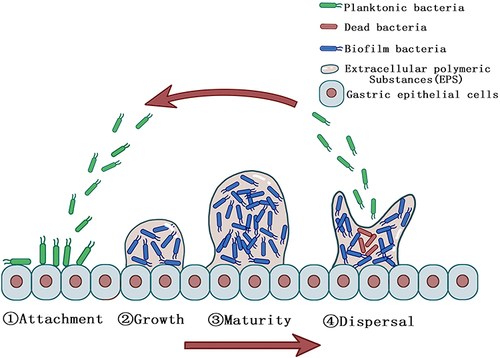Figures & data
Figure 1 Steps of H. pylori biofilm formation. Planktonic H. pylori (green) adhere to the surface of gastric epithelial cells and secrete molecules to create extracellular polymeric substances (EPS) to form an early biofilm structure and biofilm H. pylori (blue) are protected from the adverse external environment. After the biofilm matures, dead H. pylori (red) gradually appear due to the lack of nutrients in the biofilm and the biofilm dispersal into the next cycle.

Table 1 Natural Anti-Biofilm Agents Targeting H. pylori Infection
